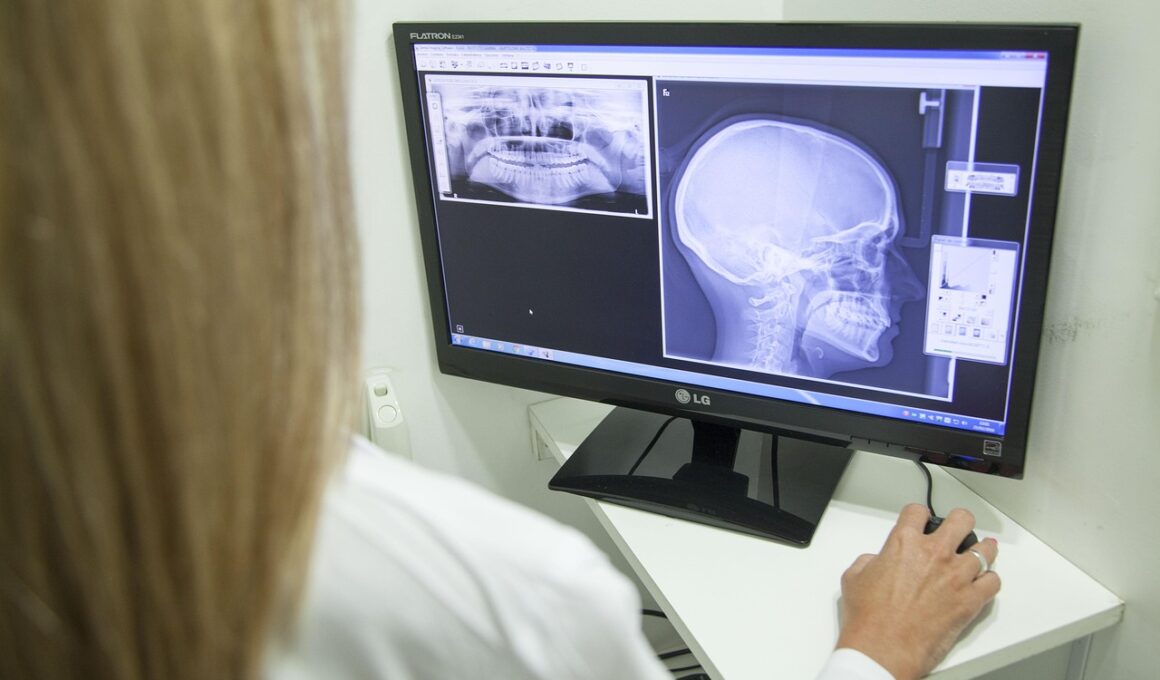Dental X-rays vs. Visual Oral Examinations for Dogs
Dental care is crucial for maintaining the health of our canine companions. Many pet owners may not realize that dogs can suffer from dental issues similar to humans. Regular examination is necessary to spot potential problems early. While visual oral examinations can identify most surface-level issues, they may miss underlying problems. Trained veterinary professionals use these examinations to detect common issues: gingivitis, plaque buildup, fractures, or gum disease. However, some issues may remain hidden beneath the surface of the gums. This is where dental X-rays come into play as an invaluable tool. They allow veterinarians to see the entire structure of the dog’s teeth and their relationship to the jawbone. This clarity is crucial for diagnosing problems like root infections or bone loss, providing a more comprehensive understanding of dental health. Maintaining dental health prevents not just oral disease but can have systemic implications, improving the overall quality of life. Ultimately, combining both methods can lead to the best results. Visual examinations complemented with X-rays create a complete portrait of canine dental health, ensuring that dogs receive the best possible care for their teeth.
The Importance of Regular Dental Check-ups
Like any other aspect of pet healthcare, regular dental check-ups play a pivotal role in a dog’s overall health. Dog owners should prioritize these visits to ensure their pets have optimal dental hygiene. During these check-ups, veterinarians assess both the visible aspects of oral health and underlying structures through X-rays. Early detection of dental decay or periodontal disease can drastically improve treatment outcomes. Without these regular assessments, many dogs could suffer in silence, facing pain or infections that go unnoticed. Furthermore, severe dental issues can lead to more serious health complications, including heart and kidney disease. Regular check-ups lead to preventative care which can include professional dental cleanings, helping to maintain a dog’s oral hygiene. Pet owners can also understand at-home dental care better during these visits. They can learn about effective brushing techniques and safe dental chews to help reduce plaque and tartar buildup. A well-informed pet owner can keep their dog’s teeth healthy even between vet visits. Thus, regular dental check-ups represent a vital aspect of responsible pet ownership, ensuring longevity and happiness for the beloved furry family member.
When discussing dental health for dogs, it is essential to understand common misconceptions regarding oral examinations. Some may believe that visual examinations alone suffice for their pet’s dental care routine. However, this is misleading. Visual exams provide an initial inspection and can identify obvious issues, but many hidden problems may go undetected. Some dental diseases, such as root canal issues, can only be confirmed with X-rays which reveal the underlying structures of the teeth and jaws. While visual examinations can gauge surface areas, they aren’t comprehensive enough to provide a complete assessment. This limitation can lead to misdiagnoses and untreated pain in pets, depriving them of necessary care. Moreover, understanding that dental health directly impacts overall health is crucial. Poor oral hygiene can lead to infections, affecting not just the mouth but the heart, liver, and kidneys as well. Education on dental care and regular veterinary visits ensures the detection of problems early. Therefore, the combination of visual examinations and X-rays ensures a thorough approach to canine dental health, preventing complications while enhancing the quality of life for dogs. Pet owners should invest in routine check-ups and quality care for their furry friends.
Understanding the Dental X-ray Process
Dental X-rays for dogs involve a straightforward yet delicate process. Veterinarians first conduct an assessment of the dog’s oral cavity during a routine visit. Depending on the visual examination findings, they may recommend X-rays for a closer look at the teeth below the gum line. The X-ray process usually requires the pet to be sedated to keep them calm and still, ensuring clear images are obtained without stress. The veterinarian will place small film sensors inside the dog’s mouth, capturing high-quality images of the teeth and surrounding bone structures. Once taken, these images allow the veterinarian to evaluate issues related to tooth roots, such as resorptive lesions, tooth misalignment, or other hidden concerns not visible during a simple examination. X-rays reveal the exact condition of teeth and jawbone, making it easier for veterinarians to create effective treatment plans for dental diseases. Performing these X-rays only occasionally, based on a dog’s age and health history, is essential. Regularly, healthy teeth may only need visual examinations, but senior dogs or those with previous dental issues may need X-rays more frequently. This approach helps in maintaining optimal dental health.
While visual examinations play a crucial role, the limitations of such evaluations can become evident. This is particularly true with specific dental diseases that can go unnoticed during a simple check-up. For instance, periodontal disease may be silent at the onset, presenting only mild symptoms until more severe damage occurs. Therefore, many veterinarians advocate for regular dental X-rays as part of a comprehensive dental care plan. These X-rays can reveal diseases that are asymptomatic, allowing for earlier intervention before severe complications arise. Additionally, X-rays inform necessary procedures for treatment, such as extraction of diseased teeth or bone grafting in advanced cases. Pet owners should not overlook the importance of X-rays as a preventive measure. A proactive approach using dental X-rays can lead to better overall health outcomes for pets. Furthermore, understanding the timing for when to conduct X-rays can vary based on individual dog health, age, and dental history. By staying vigilant and informed about dental conditions through both visual checks and X-rays, pet owners can ensure the well-being of their pets and address dental problems effectively as they arise.
Conclusion: The Ideal Approach to Dog Dental Care
Ultimately, maintaining optimal dental health for dogs requires a balanced approach incorporating both visual examinations and dental X-rays. The potential for hidden problems beneath the dog’s gumline necessitates a comprehensive dental evaluation strategy that leverages the strengths of both methods. While visual examinations can yield valuable information, they may not capture the entire picture of a dog’s dental health. Therefore, incorporating X-rays into routine veterinary visits enhances the overall understanding of a dog’s dental condition. By recognizing and addressing underlying issues early, dog owners can minimize their pets’ suffering and improve their longevity. Furthermore, regular professional care supplemented with at-home dental hygiene routines fosters a holistic approach to oral health. Pet owners should engage in educational opportunities to better understand their dogs’ needs for dental care. Maintaining consistent communication with veterinarians about the best practices for their specific pets ensures a customized dental care routine tailored to their dog’s unique needs. Investing time and resources into dog dental care yields significant dividends for the health and happiness of canine companions over their lifetimes.
In conclusion, significant advancements in veterinary dental care underscore the essential role of both visual assessments and dental X-rays. Ensuring a dog’s dental health requires ongoing commitment and attentiveness, making regular veterinary visits indispensable for conscientious pet owners. Awareness of the limitations of each method can empower owners to seek comprehensive dental health strategies for their beloved companions. Moreover, recognizing the link between oral health and overall wellbeing enhances the ability of dog owners to provide the best care possible. After all, a happy, healthy dog leads to a happy owner. Through regular check-ups, an understanding of essential care practices, and the importance of innovative diagnostic tools like X-rays, pet owners can help keep their canine companions healthy. Combining frequent dental examinations with X-rays builds a foundation for ensuring long-term oral health. This proactive strategy reduces the risk of severe medical conditions stemming from untreated dental diseases, leading to happier lives for dogs and peace of mind for owners. Therefore, investing in dental health is not just wise but necessary for every beloved dog in the home.



